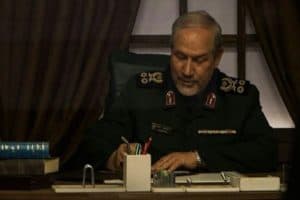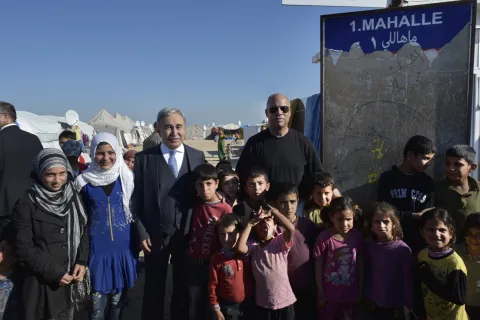Related reading: Foreign Terrorist Organizations, Bureau of Counterterrorism
Chairman McCaul Unveils Counterterrorism Strategy “A National Strategy to Win the War Against Islamist Terror”
Contains 100+ policy ideas and principles for fighting terrorism
WASHINGTON, D.C. – On the heels of Islamist terror attacks in the homeland this past weekend, House Homeland Security Committee Chairman Michael McCaul (R-TX) today unveiled his counterterrorism strategy, entitled A National Strategy to Win the War Against Islamist Terror. Chairman McCaul’s nonpartisan strategy contains over 100 policy ideas, recommendations, and principles for fighting terrorism.
The ideas put forward in the McCaul strategy were developed in consultation with an array of national security experts on both sides of the aisle. They are not “Republican” or “Democrat” ideas, but rather common-sense solutions for better protecting Americans.
Chairman McCaul: “As radical Islamist terror continues to sweep the globe, it has become clear that we are not winning the overall fight against it. There are now more terrorist foot soldiers and safe havens than any time in modern history, and our enemies have alarming momentum. They are reaching deep into the heart of the Western world—including our own communities—to spread their hateful ideology and perpetrate violent acts. Just this weekend we saw again that our homeland remains a terrorist target, and they have attacked our allies in places like Paris, Brussels, Nice, and beyond. Yet in recent years our strategy and policies have failed to roll back the threat, let alone contain it. That is why I’ve produced a new, national counterterrorism strategy aimed at reversing the tide of terror and protecting our great nation. The eyes of the world are now upon us, and American leadership is needed to defeat this evil. My plan is a guidepost—for Congress and the next president—to do what is needed to win this generational struggle.”
Overview of the Strategy
The McCaul strategy contains 100+ policy ideas and principles for fighting terrorism. Some are new, while others are abandoned policies we need to revive in order to protect America and its interests overseas against the surging terror threat.
The document is built around clear objectives: defend the homeland, defeat terrorists, and deny extremists the opportunity to re-emerge. It presents nine counterterrorism priorities, or “means,” needed to achieve the “ends” described above, including:
- Thwart attacks and protect our communities
- Stop recruitment and radicalization at home
- Keep terrorists out of America
- Take the fight to the enemy
- Combat terrorist travel and cut off financial resources
- Deny jihadists access to weapons of mass destruction
- Block terrorists from returning to the battlefield
- Prevent the emergence of new networks and safe havens
- Win the battle of ideas
This counterterrorism strategy is different than those that came before it. President Bush released a strategy for combating terrorism in 2003, and President Obama released one in 2011. Both are now outdated.
- This strategy is written to keep pace with an evolving enemy. It proposes ways to fight terrorist propaganda online; counter homegrown radicalization; deal with terrorists’ use of encryption; and help communities better protect against IEDs, active shooter plots, and other changing terror tactics.
- This strategy aims to bring our homeland security policies into the digital age. It proposes to improve the screening of foreign visitors, immigrants, and refugees using new technologies and better intelligence—including social media—to keep terrorists from infiltrating our country.
- This strategy focuses on breaking the Islamist terror movement—not just defeating one group. Our nation’s last official counterterrorism strategy focused almost exclusively on al Qaeda, leaving us blind to the rise of ISIS. This plan is designed to go after Islamist terrorists, regardless of location or branding.
The bottom line is this: we cannot accept Islamist terror attacks as “the new normal.” We must defeat the perpetrators. The McCaul strategy makes clear that we are facing a long, generational struggle, but we should wage it with the same resolve we showed in defeating other totalitarian ideologies, including communism and fascism.
The full strategy is available, here.




 Today, Secretary of Homeland Security Jeh Johnson concluded a three-day trip to Turkey, where he visited a refugee camp, reviewed resettlement processing, spoke to a number of Syrian and Iraqi refugee families, met with government officials in Istanbul and Ankara to discuss a range of homeland security-related issues, and signed two bilateral accords to codify mutual commitment to deepen collaboration.
Today, Secretary of Homeland Security Jeh Johnson concluded a three-day trip to Turkey, where he visited a refugee camp, reviewed resettlement processing, spoke to a number of Syrian and Iraqi refugee families, met with government officials in Istanbul and Ankara to discuss a range of homeland security-related issues, and signed two bilateral accords to codify mutual commitment to deepen collaboration.